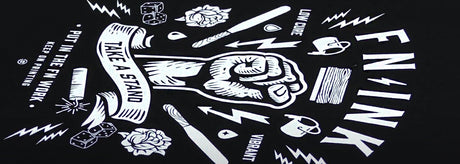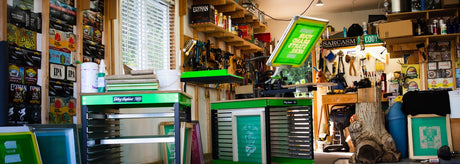
How To Dial In Exposure Times Using An Exposure Calculator
Figuring out exposure times is one of the most difficult tasks in screen printing. If you're struggling, you're not alone. The best thing you can do is invest in a 21-Step...
Free Shipping in the Con. US Learn More

Figuring out exposure times is one of the most difficult tasks in screen printing. If you're struggling, you're not alone. The best thing you can do is invest in a 21-Step...

One of the scariest parts of screen printing is turning a profit. Printers want to make a profit and stay competitive, but not price too high or too low. How...

Screen printing is a challenging, creative process. Many screen printers start out as a hobby, or get into the trade through other means of garment decorating, like vinyl or embroidery....

Printing white ink on black shirts is a popular design combination. For this design choice to be most effective, the ink needs to be clean and bright. For the best results, printers...

Soft hand prints are best achieved with water-based ink but can be done with plastisol ink as well. Between the inks you choose to use, the garments you're printing on, to the...

Curing your prints is one of the last steps of the screen printing process, but it is one of the most important steps. Ink needs to be cured properly so...

Are you dreaming about warm summer days when your ink flows oh so smoothly? Winter and its cooler temperatures sure make it difficult for a screen printer, especially with white...

Tons of print shops start off in basements, spare rooms, and garages. Think about it, they're already investing a good chunk of cash into purchasing the equipment and supplies, why...

Not all emulsions respond the same when coating screens: some emulsions require adjustments in pressure and speed, depending on the emulsion thickness and the type of mesh you're working with on your...

A heat press is a great tool and has tons of uses. Many screen printers start by heat pressing transfers onto t-shirts, tote bags, or other garments. Heat presses can...

Screen printing is a unique industry. Printers take a blank shirt and turn it into a work of art. You can make anything out of the trade, whether that’s a...

Placing pocket prints or left chest prints perfectly on a shirt can be tough. You don't want the print to end up in the armpit or on the neckline of...

Screen printing doesn’t have to just be about printing t-shirts. You can print on just about anything with the right tools and process. One unique material to print on is...